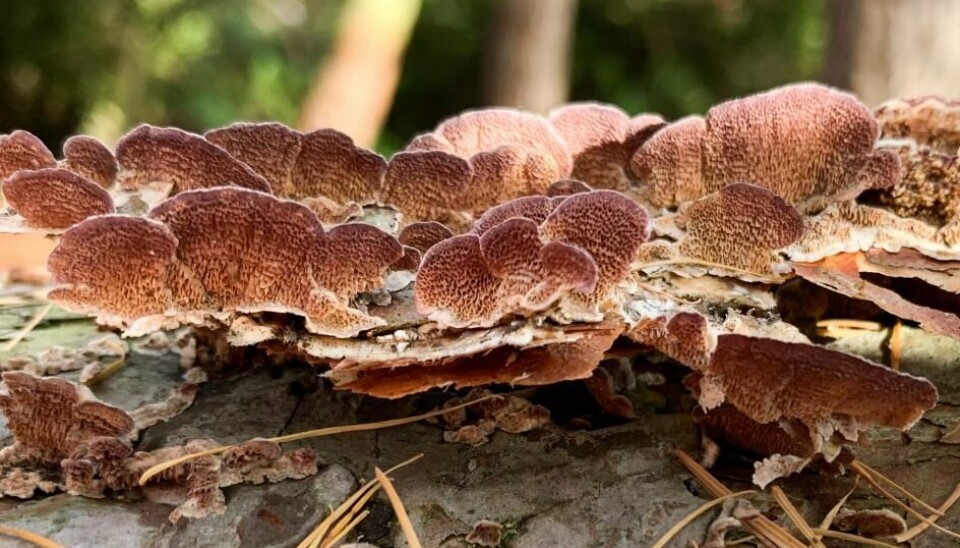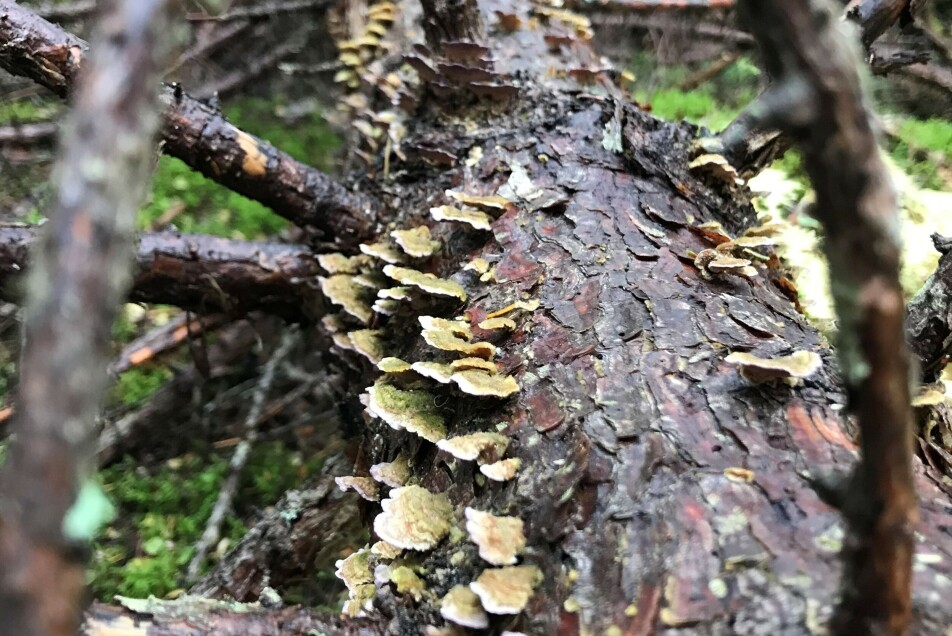THIS ARTICLE/PRESS RELEASE IS PAID FOR AND PRESENTED BY University of Oslo - read more

These fungi have more than 17,000 sexes
Fungi of the genus Trichaptum have a mating system where thousands of mating types give them a much better chance of finding a compatible partner.
In humans sex is determined by the Y chromosome. Either you have it or you don’t. In theory this gives us just 50 percent chance of meeting a compatible partner. Seeing, hearing and other senses of course help us increase our chances.
Fungi don’t have eyes, ears or other organs to help them, but a group of fungi have a much more intricate mating system that almost guarantees success when they send their spores out searching for a mate. In the poroid fungi Trichaptum, mating type is decided by two areas (loci) in the genome and they both have to be different.
“They have a very high chance of meeting someone with a different mating type and they have less chances of inbreeding,” says Inger Skrede, associate professor at the Department of Biosciences at the University of Oslo.
“98 per cent of the time they will find a compatible partner,” says David Peris, researcher at the Department of Biosciences at the University of Oslo.
An advantage to be rare
There is also a high genetic variation in the two mating loci in Trichaptum. There are many different forms, called alleles, of the genes. Skrede and Peris have identified more than twenty alleles in each of the loci. All this adds up to 17,550 mating types.
It is not unique with such high numbers. Previous studies have also found high numbers of mating types.
“It is common in these fungi in general. We think it is maintained because it is always an advantage to be rare. If you have an allele that is not common, you have even better chances of meeting someone different. This is why this large diversity is maintained,” Skrede says.

Adapting to new conditions
This high number of mating types will be a huge advantage for the fungi when exposed to changes in the environment.

“When they find a compatible partner with a different mating type, the rest of the genome is probably different as well, so they will get a new combination of alleles. If the conditions in the environment are changing and you need to generate diversity for adapting to these new conditions, mixing different alleles will increase your chances to survive,” Peris says.
He compares this to our immune genes.
“If you have more alleles in your immune genes, you are able to detect more pathogens and your immune system will attack them. More is better in these cases,” Peris says.
This high variability is retained in the populations due to their beneficial consequences. A special form of natural selection, known as balancing selection, is responsible for keeping such high number of alleles.
"What we are also providing in this work are the bioinformatic tools to detect this particular type of selection," Peris says.
Rendezvous on a petri dish
Skrede, Peris and their colleagues have gathered samples of 180 individuals from around the world.

“What we have done is new. We have sequenced the full genome of all of them. Then we fetched out those loci and compared which genes they have, which mating version they have," Skrede says.
In that way they are able to predict who should be able to mate and who should not. They have also done actual mating in the lab, arranging rendezvous between all combinations of two individuals in the laboratory experiments.
“One thing is to know that they are genetically different, but this is a good way to test these results. Pairs of individuals were combined on a petri dish, and if they mated we could observe this easily in the microscope,” Skrede says.
This study is part of a larger project where they try to identify barriers when fungi cannot mate.
“To do this we needed this baseline information about how they mate normally. We can use information from this in our further work, trying to understand when this stop to function, which other genes are involved,” Skrede says.
Reference:
David Peris et al. Large-scale fungal strain sequencing unravels the molecular diversity in mating loci maintained by long-term balancing selection, PLOS Genetics, March 2022.
See more content from the University of Oslo:
-
Queer opera singers: “I was too feminine, too ‘gay.’ I heard that on opera stages in both Asia and Europe”
-
Putin’s dream of the perfect family
-
How international standards are transforming the world
-
A researcher has listened to 480 versions of Hitler's favourite music. This is what he found
-
Researcher: "AI weakens our judgement"
-
New, worrying trend among incels, according to researcher





































